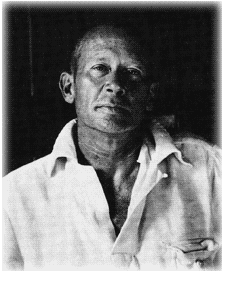In his poetry, Cummings stressed the theme of individuality over modern conformist living. He innovated and experimented boldly in style, form, and even punctuation and grammar, signing his work “e.e. cummings.”*
Cummings is best known for his peculiar approach to both capitalization and punctuation, which are seemingly placed at random, slicing up individual words as well as sentences. Many of his poems are better understood when taken as a whole on the written page.
 His poetry, idiosyncratic as it might first appear, grapples with something his father said in a sermon — echoing the insights of Emerson, Thoreau, and Emily Dickinson — “The Kingdom of Heaven is no spiritual roofgarden: It’s inside you.”
Cummings` poetry is influenced by his Transcendentalist leanings, focusing on love and love of nature, as well as satire, and how the individual copes with the masses and the world around him.
The early years
Cummings was born Edward Estlin Cummings in October 1894, just outside of Boston in Cambridge, Massachusetts. His father was a Unitarian minister and one-time Harvard professor whose support of his son (and daughter) was assiduous. Greek and Latin came to Cummings as naturally as English, and they are given their due in some of his works: Xaipe: (“Rejoice!”) Seventy-one Poems, in Greek; Anthropos ("Mankind"), a play in Greek; and Puella Mea ("My Girl"), in Latin).
Cummings graduated from Harvard with a BA in 1915 and an MA in 1916, after being published in the Harvard Monthly and the Harvard Advocate. He was counted among the "Harvard Aesthetes" that included the likes of John Dos Passos (the trilogy U.S.A., comprising The 42nd Parallel, 1919, and The Big Money) and S. Foster Damon.
The war and beyond
Much to Cummings’ chagrin, he and friend William Slater Brown, better known as the character “B” in Cummings’ novel/memoir The Enormous Room, were unceremoniously dumped into a French detention camp in a small Normandy town during World War I. The book relates the experiences Cummings and Brown endured during the three-and-a-half month-long nightmare, all due to an administrative snafu following his attempt to volunteer for the Norton-Harjes Ambulance Corps in France. Cummings and Brown were arrested on suspicion of espionage, even after they openly avowed their pacifist ideology.
About the book, F. Scott Fitzgerald lamented, "Of all the work by young men who have sprung up since 1920 one book survives — The Enormous Room, by E.E. Cummings . . . Those few who cause books to live have not been able to endure the thought of its mortality."
Significant literary works
In addition to The Enormous Room, Cummings achieved notoriety for:
His poetry, idiosyncratic as it might first appear, grapples with something his father said in a sermon — echoing the insights of Emerson, Thoreau, and Emily Dickinson — “The Kingdom of Heaven is no spiritual roofgarden: It’s inside you.”
Cummings` poetry is influenced by his Transcendentalist leanings, focusing on love and love of nature, as well as satire, and how the individual copes with the masses and the world around him.
The early years
Cummings was born Edward Estlin Cummings in October 1894, just outside of Boston in Cambridge, Massachusetts. His father was a Unitarian minister and one-time Harvard professor whose support of his son (and daughter) was assiduous. Greek and Latin came to Cummings as naturally as English, and they are given their due in some of his works: Xaipe: (“Rejoice!”) Seventy-one Poems, in Greek; Anthropos ("Mankind"), a play in Greek; and Puella Mea ("My Girl"), in Latin).
Cummings graduated from Harvard with a BA in 1915 and an MA in 1916, after being published in the Harvard Monthly and the Harvard Advocate. He was counted among the "Harvard Aesthetes" that included the likes of John Dos Passos (the trilogy U.S.A., comprising The 42nd Parallel, 1919, and The Big Money) and S. Foster Damon.
The war and beyond
Much to Cummings’ chagrin, he and friend William Slater Brown, better known as the character “B” in Cummings’ novel/memoir The Enormous Room, were unceremoniously dumped into a French detention camp in a small Normandy town during World War I. The book relates the experiences Cummings and Brown endured during the three-and-a-half month-long nightmare, all due to an administrative snafu following his attempt to volunteer for the Norton-Harjes Ambulance Corps in France. Cummings and Brown were arrested on suspicion of espionage, even after they openly avowed their pacifist ideology.
About the book, F. Scott Fitzgerald lamented, "Of all the work by young men who have sprung up since 1920 one book survives — The Enormous Room, by E.E. Cummings . . . Those few who cause books to live have not been able to endure the thought of its mortality."
Significant literary works
In addition to The Enormous Room, Cummings achieved notoriety for: